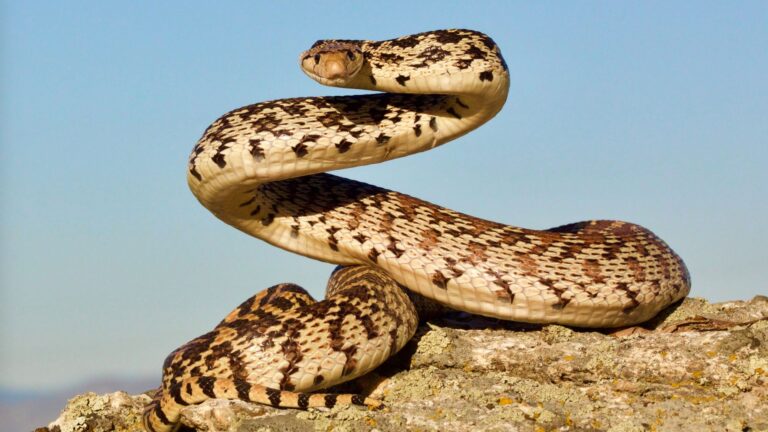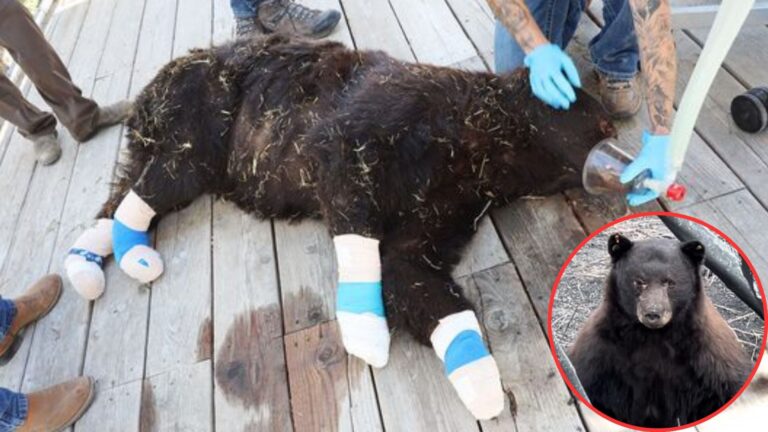14 Key Differences Between Mule Deer And White-Tailed Deer

Ever wondered why two deer species can look so similar yet be so different? Grab your binoculars and join us as we explore the fascinating contrasts between mule deer and white-tailed deer.
From their playful tails to their favorite hangouts, these deer have unique quirks that will surprise and delight nature lovers and curious minds alike.
1. Tail Characteristics
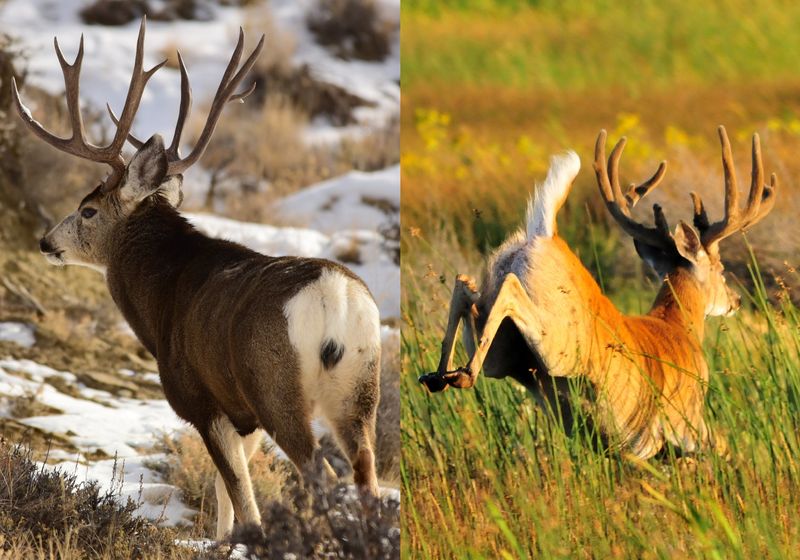
Mule deer’s tails might remind you of a paintbrush dipped in black ink. They’re narrow with a distinctive black tip. Contrast this with the white-tailed deer’s flag-like tails, which they flash like a waving banner, sending signals of danger to their herd.
2. Antler Formation
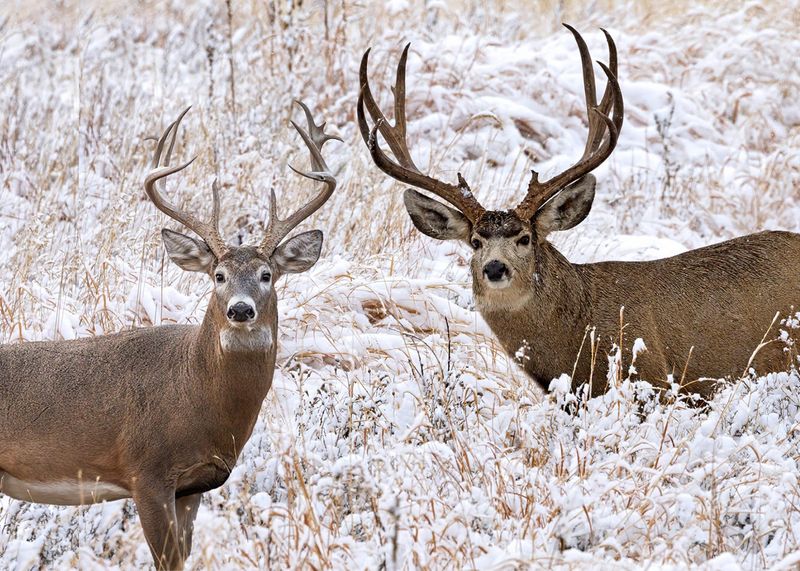
Mule deer sport antlers that split like forks, giving them a crown-like appearance. White-tailed deer prefer simplicity with their single main beam and tines shooting off like tree branches. This distinction makes them as unique as fingerprints in the deer world.
3. Habitat Preference
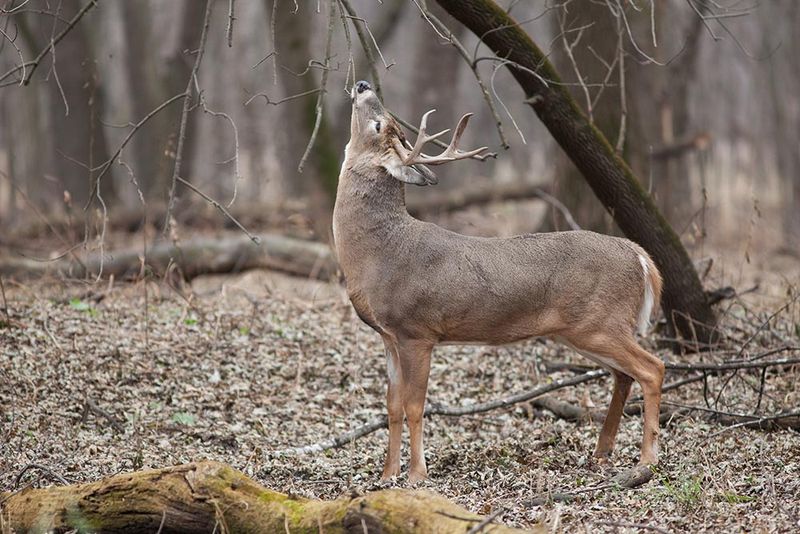
Mule deer are the adventurous types, roaming rough, open terrains like the rocky mountain vistas. White-tailed deer, however, are homebodies, preferring the dense cover of forests where they can sneak and hide like woodland ninjas.
4. Gait And Movement
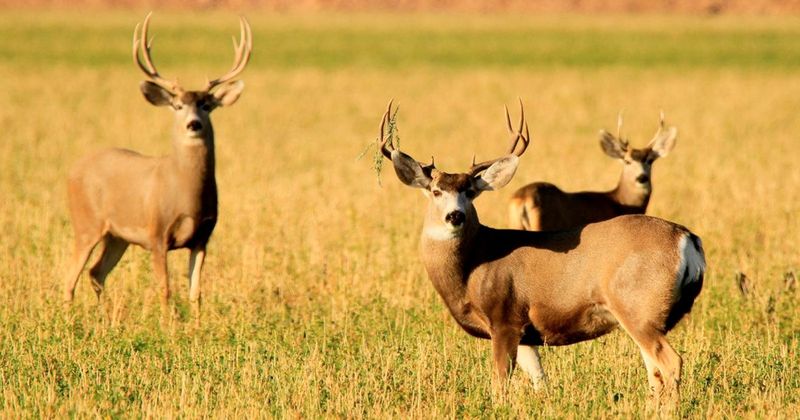
Watch a mule deer in motion, and you might think it’s auditioning for a ballet, with its bounding leaps that lift all four legs. Meanwhile, the white-tailed deer is built for speed, sprinting with grace and a low profile like a forest racer.
5. Coloration
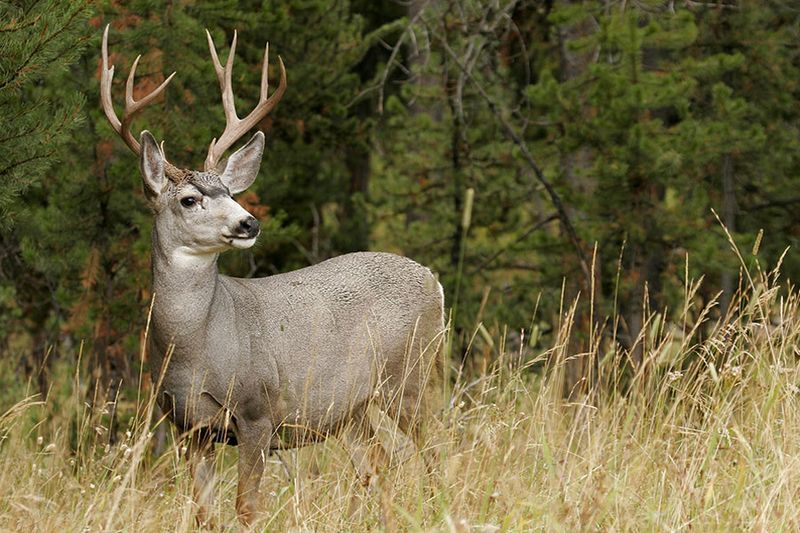
Mule deer wear a muted palette, often leaning towards grayer tones. They’re the understated sophisticates of the deer fashion world. White-tailed deer, however, rock a richer, more vibrant reddish-brown, standing out like woodland celebrities in their autumnal attire.
6. Facial Features
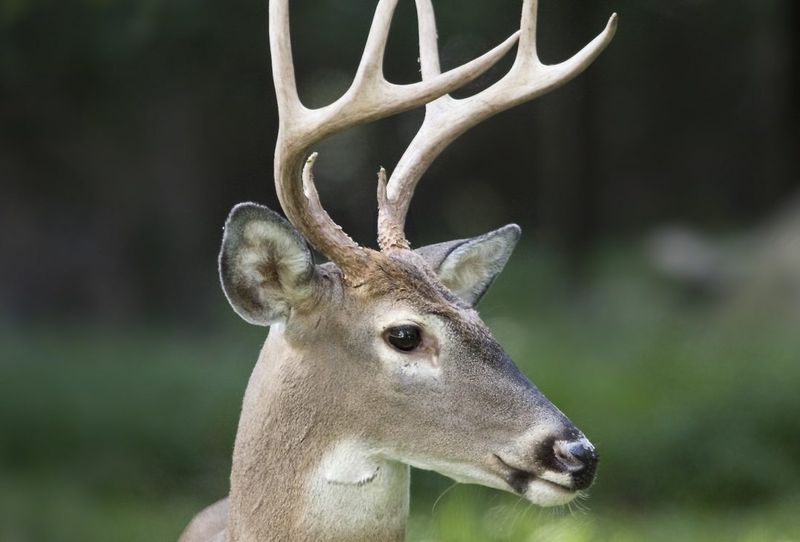
The mule deer’s face comes with bold markings, almost like nature’s makeup, accentuating its eyes and nose. On the flip side, white-tailed deer have softer, subtler features, exuding an air of innocence and charm—nature’s own minimalists.
7. Fawn Spots
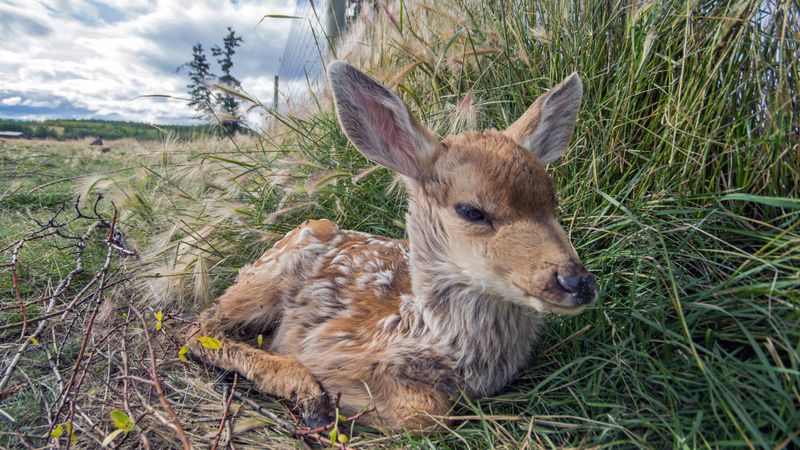
Spot the difference! White-tailed fawns are born with a pattern of bright spots, like nature’s polka-dot fabric. Mule deer fawns, however, come with more subtle, faded spots, disappearing faster as they grow, as if nature decided less is more.
8. Reproductive Behavior
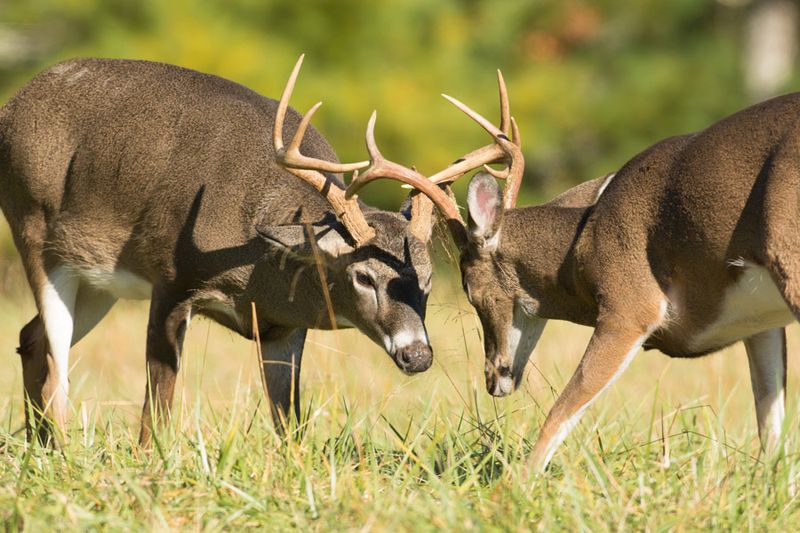
Here’s a fun fact: Mule deer moms are more likely to birth twins, embracing a ‘the more, the merrier’ approach. On the other side, white-tailed does often prefer single offspring, focusing their nurturing energy on one little bundle of joy at a time.
9. Social Structure

In the social scene, mule deer are the free spirits, often forming loosely knit groups. It’s like a casual meetup of acquaintances. Meanwhile, white-tailed deer stick close in family units, embodying the phrase ‘family first’ in their tight-knit gatherings.
10. Predator Evasion Tactics
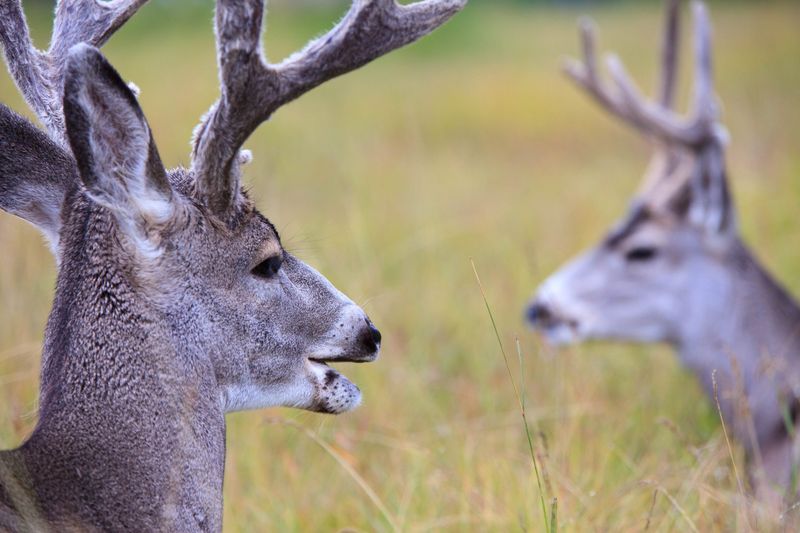
When it comes to dodging predators, mule deer blend into rocky terrains with their subtle coats. White-tailed deer, however, take a more dramatic approach, flashing their tails to warn comrades of danger, like a living alarm system in the wild.
11. Interspecies Interaction
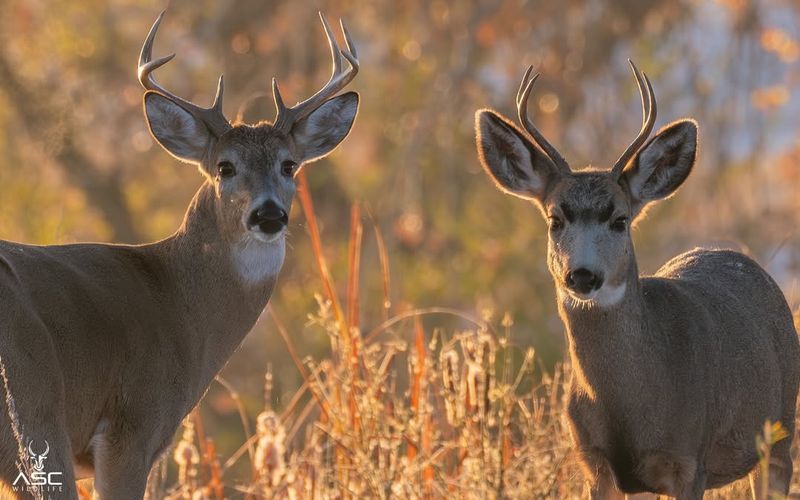
When mule deer and white-tailed deer cross paths, there’s a fascinating dance of curiosity and caution. Mule deer often exhibit intrigue, while white-tailed deer might choose a more aloof stance, keeping interactions as brief as a passing glance.
12. Lifespan And Longevity
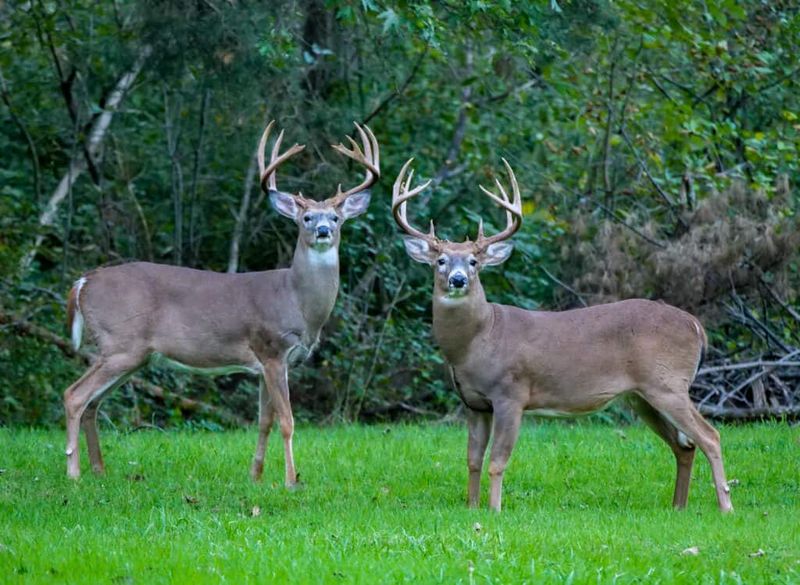
Life’s a journey, and for mule deer, it tends to be a tad longer, with some living beyond a decade. White-tailed deer march to a different beat, often enjoying slightly shorter lifespans, yet living each day to its fullest in vibrant forest habitats.

